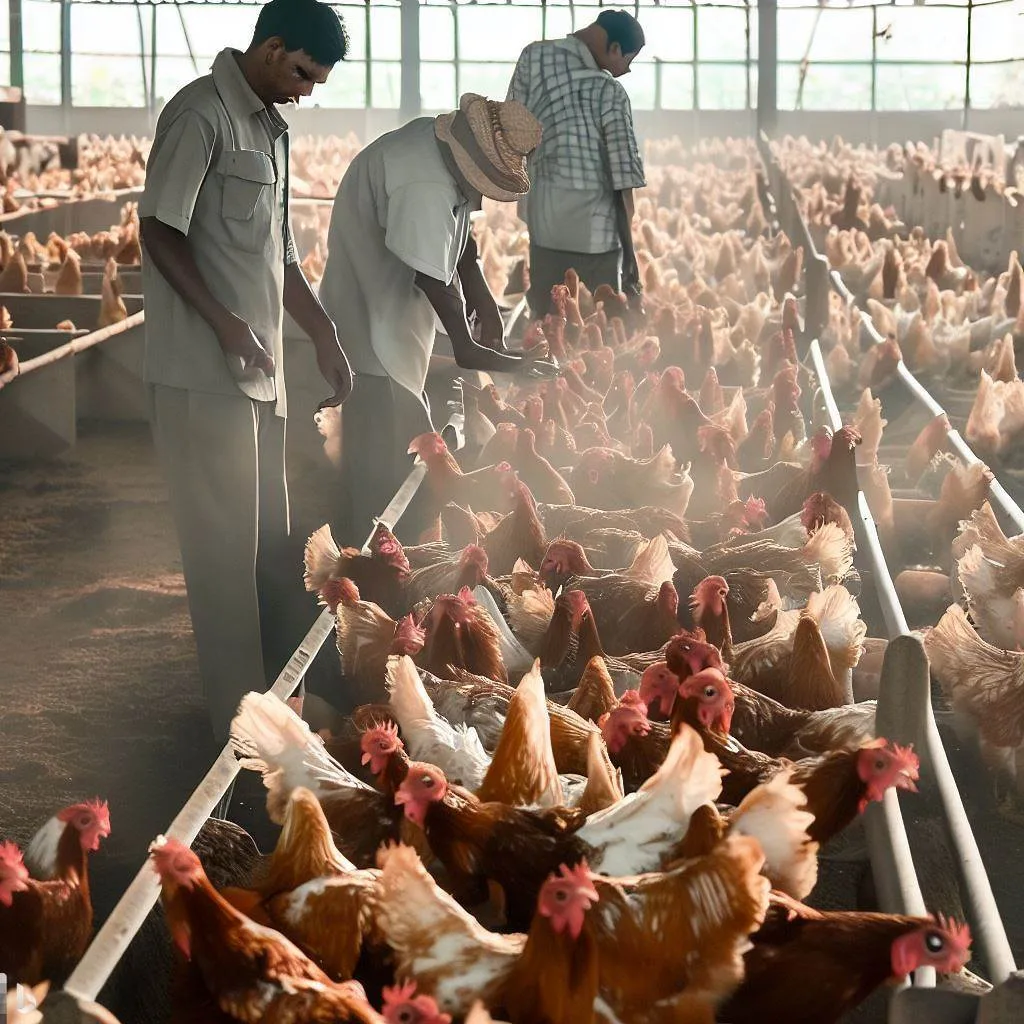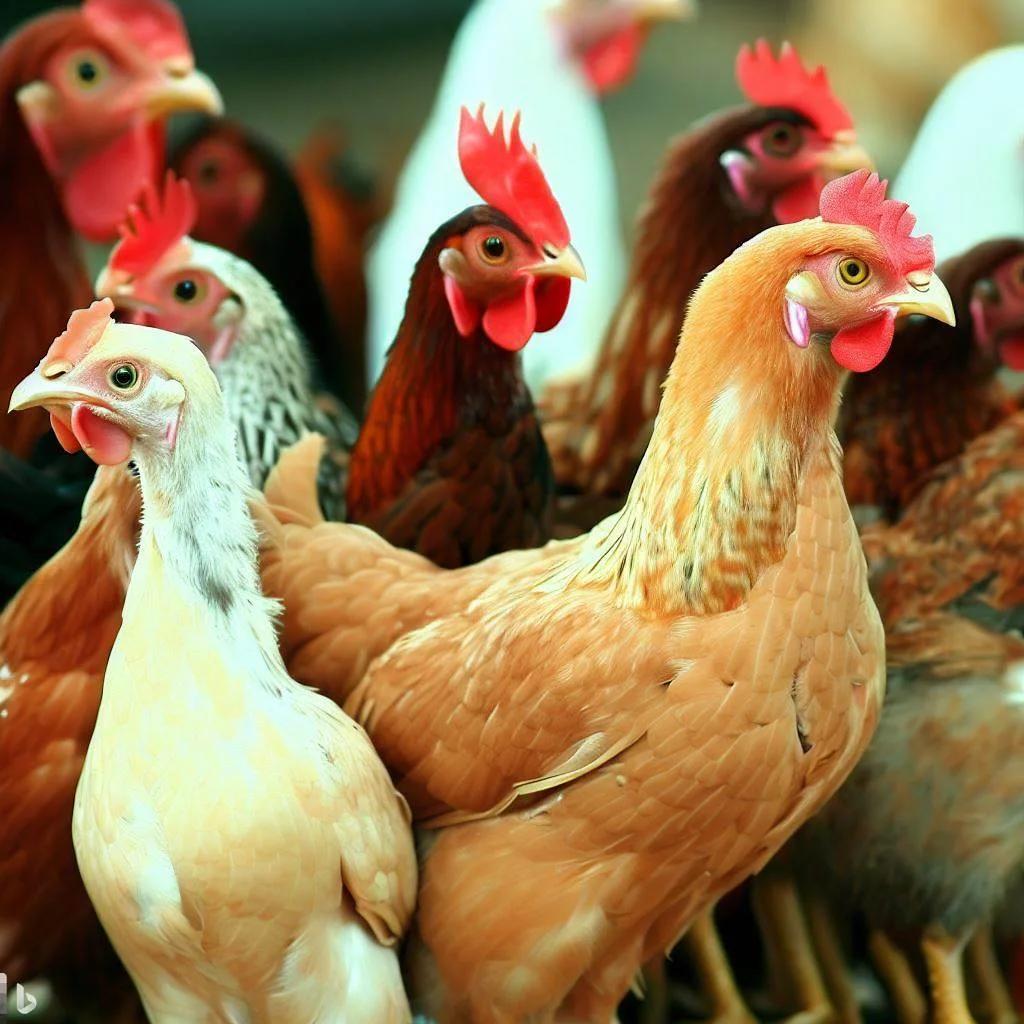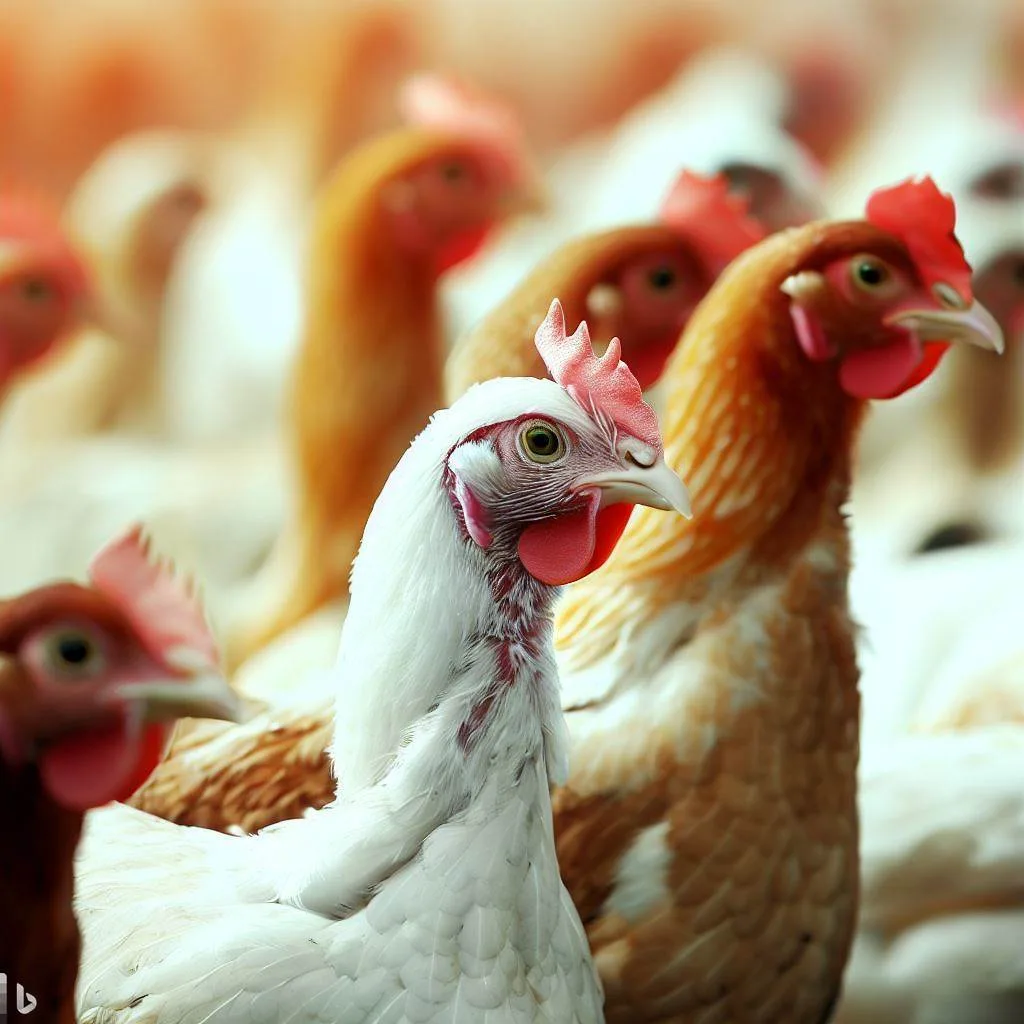Poultry farming is the practice of raising domesticated birds such as chickens, ducks, geese, and turkeys for their meat, eggs, and feathers. Poultry farming is one of the most popular agricultural practices in India, as it is a source of livelihood for many farmers and also helps meet the country’s growing demand for protein-rich food. In this article, we will discuss in detail how to start a poultry farm in India, the benefits of poultry farming, how to select the right sector and birds, and the licenses required for starting a poultry farm.
How to Start a Poultry Farm in India:
Starting a poultry farm in India requires careful planning, investment, and expertise. Here are the steps to follow:
Step 1: Research the Market and Demand for Poultry Products
Before starting a poultry farm, it is essential to research the market and demand for poultry products such as meat and eggs in the local area. You can speak to local traders, wholesalers, and retailers to gauge the market demand and find out the prevailing prices of poultry products.
Step 2: Finalise the Sector and Birds to Rear
Once you have assessed the market demand, the next step is to choose the right sector and birds to rear. There are mainly three sectors of poultry farming: layer farming, broiler farming, and hatchery farming. Layer farming involves rearing birds for egg production, while broiler farming involves raising birds for meat production. Hatchery farming involves hatching eggs and selling day-old chicks to farmers.
The choice of birds will depend on the sector you choose. For layer farming, popular breeds include White Leghorn, Rhode Island Red, and Plymouth Rock. For broiler farming, popular breeds include Cornish Cross, Hubbard, and Lohmann. It is essential to choose high-quality breeds that are disease-resistant and have a high yield.
Step 3: Finalise the Location
The next step is to finalize the location of your poultry farm. The location should be easily accessible and have good transport connectivity. It should also have a reliable source of water and electricity. The farm should be located away from residential areas to avoid complaints about noise and odor. You can consult with a local veterinarian or agricultural expert to help you select the right location.
Step 4: Build Infrastructure
The next step is to build the necessary infrastructure for your poultry farm. This includes constructing sheds or houses for the birds, feeders, drinkers, and egg-laying nests. The sheds should be well-ventilated and provide enough space for the birds to move around. You can hire a contractor or use your own resources to build the infrastructure.
Step 5: Procure Equipment and Supplies
Once the infrastructure is in place, the next step is to procure the necessary equipment and supplies such as feed, vaccines, and medicines. You can source these from local suppliers or online stores. It is important to choose high-quality equipment and supplies to ensure the health and productivity of your birds.
Step 6: Hire Workers
The final step is to hire workers to help you manage your poultry farm. You can hire experienced workers who have worked in the poultry industry before, or you can train them on the job. It is important to ensure that your workers follow proper hygiene and safety practices to avoid the spread of diseases.

Types of Poultry Farming in India
- Free-range poultry farming: Free-range poultry farming is a traditional method of raising poultry in India. In this method, the birds are allowed to roam freely in a designated area, such as a pasture or backyard, and feed on natural vegetation and insects. This method is known for producing high-quality meat and eggs, as the birds have access to natural food sources and exercise.
- Cage poultry farming: Cage poultry farming is a modern method of raising poultry in India. In this method, the birds are kept in cages that are stacked on top of each other in a designated area. The cages are equipped with feeders and waterers, and the birds are kept in a controlled environment with regulated temperature and lighting. This method is known for its high productivity and efficiency, as the birds are kept in a small area and their feed and water intake can be easily monitored.
- Organic poultry farming: Organic poultry farming is a method of raising poultry that emphasizes the use of natural feed and management practices. In this method, the birds are fed with organic feed that is free from chemicals and additives, and they are raised in a natural environment without the use of antibiotics and growth hormones. This method is known for producing high-quality meat and eggs that are free from harmful chemicals and additives.
- Backyard poultry farming: Backyard poultry farming is a small-scale method of raising poultry in India. In this method, the birds are raised in a small area, such as a backyard or terrace, and are fed with natural feed and scraps from the kitchen. This method is popular among rural households and urban dwellers, as it provides a source of income and fresh meat and eggs.
- Contract poultry farming: Contract poultry farming is a method of raising poultry that involves a partnership between a poultry farmer and a poultry company. In this method, the poultry company provides the birds, feed, and other inputs, while the farmer provides the labor and management. The farmer receives a share of the profits from the sale of meat and eggs. This method is popular among small-scale farmers who do not have the resources to invest in poultry farming.

Types of Poultry Breeds in India
Poultry farming business plan is an important aspect of agriculture in India, and there are many different types of poultry breeds that are raised for meat and egg production. These breeds have unique characteristics that make them suitable for different farming purposes. In this article, we will discuss some of the popular poultry breeds in India and their characteristics.
- Kadaknath: Kadaknath is a breed of chicken that is native to Madhya Pradesh. It is a black chicken that is known for its high meat quality and taste. The breed is also known for its adaptability to different climatic conditions, making it a popular choice for backyard farming.
- Aseel: Aseel is a breed of chicken that is native to India and Pakistan. It is a game breed that is raised for both meat and cockfighting. The breed is known for its muscular build, stamina, and aggressive nature.
- Giriraja: Giriraja is a breed of chicken that is native to India. It is a dual-purpose breed that is raised for both meat and egg production. The breed is known for its high egg production rate, good meat quality, and adaptability to different climatic conditions.
- Vanaraja: Vanaraja is a breed of chicken that is developed by the Indian Council of Agricultural Research (ICAR). It is a dual-purpose breed that is raised for both meat and egg production. The breed is known for its high egg production rate, good meat quality, and adaptability to different climatic conditions.
- Rhode Island Red: Rhode Island Red is a breed of chicken that is popular in India for its egg-laying ability. It is a medium-sized bird that lays brown eggs. The breed is known for its docile temperament and adaptability to different climatic conditions.
- Plymouth Rock: Plymouth Rock is a breed of chicken that is popular in India for its meat and egg-laying ability. It is a large bird that is good for both meat and egg production. The breed is known for its hardiness and adaptability to different climatic conditions.
- White Leghorn: White Leghorn is a breed of chicken that is popular in India for its egg-laying ability. It is a lightweight bird that lays white eggs. The breed is known for its high egg production rate and adaptability to different climatic conditions.
- Cornish Cross: Cornish Cross is a breed of chicken that is popular in India for its meat. It is a fast-growing bird that is known for its large size and high meat yield. The breed is often used for commercial meat production.

Benefits of Poultry Farming:
Poultry farming has several benefits, including:
- High Returns: Poultry farming in India has a high return on investment (ROI) compared to other agricultural practices. It is possible to recoup your investment within a few years.
- Easy to Manage: Poultry farming is relatively easy to manage and does not require extensive training or expertise. With proper care and attention, the birds can be kept healthy and productive.
- Low Maintenance: The poultry farming business requires low maintenance compared to other livestock farming practices. Birds are smaller in size and are easier to handle and transport. They also require less space than larger animals like cows and buffaloes.
- Multiple Revenue Streams: Poultry farming offers multiple revenue streams through the sale of meat, eggs, feathers, and manure. The manure can be used as a natural fertilizer for crops, reducing the need for chemical fertilizers.
- High Demand: Poultry products have high demand in the market, and the demand is only growing due to the increasing population and changing dietary habits.
Selection of Sector and Birds:
Choosing the right sector and birds is crucial for the success of a poultry farm. Layer farming involves rearing birds for egg production, and broiler farming involves raising birds for meat production. Hatchery farming involves hatching eggs and selling day-old chicks to farmers.
When selecting birds, it is essential to choose high-quality breeds that are disease-resistant and have a high yield. Popular breeds for layer farming include White Leghorn, Rhode Island Red, and Plymouth Rock. Popular breeds for broiler farming include Cornish Cross, Hubbard, and Lohmann. It is advisable to consult with a local veterinarian or agricultural expert to choose the right breeds for your farm.
Finalising Location:
The location of a poultry farm is crucial for its success. The location should be easily accessible and have good transport connectivity. It should also have a reliable source of water and electricity. The farm should be located away from residential areas to avoid complaints about noise and odor.
It is advisable to choose a location that is close to the market to reduce transportation costs. The climate of the location should also be favorable for the birds. For example, birds may not thrive in extreme temperatures, so it is important to choose a location with a moderate climate.
Required Licenses:
Starting a poultry farm requires several licenses and permits. These include:
- Registration under the Companies Act or the Partnership Act
- Registration under the Food Safety and Standards Act, 2006
- Obtaining a NOC (No Objection Certificate) from the Pollution Control Board
- Obtaining a trade license from the local municipal corporation
- Obtaining a permit from the Animal Husbandry Department
It is essential to consult with a lawyer or an expert to ensure that you have all the necessary licenses and permits before starting your poultry farm.

Conclusion:
Poultry farming is an excellent business opportunity in India, as it offers high returns, is easy to manage, and has multiple revenue streams. To start a poultry farm, it is essential to research the market demand, choose the right sector and birds, finalize the location, build the necessary infrastructure, procure equipment and supplies, and hire workers. It is also important to ensure that you have all the necessary licenses and permits before starting your poultry farm. With proper planning and management, a poultry farm can be a profitable and sustainable business venture in India.
Starting a poultry business in India can be challenging, but with the right skills, knowledge, and support, you can build a successful enterprise. At ffreedom app, we offer a variety of poultry
business courses to help you succeed in the Indian market. Our courses cover everything from starting and running a poultry business to managing and becoming successful in it.
Our courses are designed to give you practical knowledge and skills that you can apply directly to your business. Taught by experienced industry professionals, our courses cater to beginners and experienced poultry business owners alike.
You can explore our Poultry business course through the following links:
Poultry business course in English: https://ffreedom.com/english/farming-courses/poultry-farming-course-earn-2-lakhmonth
Poultry business course in Kannada: https://ffreedom.com/kannada/farming-courses/integrated-fish-poultry-farming-course-earn-12-lakhyear
Poultry business course in Telugu : https://ffreedom.com/telugu/business-courses/poultry-farming-course-earn-up-to-90000-rupees-every-40-days
Poultry business course in Hindi: https://ffreedom.com/hindi/farming-courses/poultry-farming-course-earn-2-lakhmonth
Poultry business course in Tamil : https://ffreedom.com/tamil/farming-courses/poultry-farming-course-earn-2-lakhmonth
Kadaknath farming course in Telugu: https://ffreedom.com/telugu/farming-courses/course-on-kadaknath-chicken-farming-earn-rs-8-lakh1000-birds-in-6-months
Kadaknath farming course in Hindi: https://ffreedom.com/hindi/farming-courses/kadaknath-farming-make-rs-1-lakhmonth
Kadaknath farming course in Kannada: https://ffreedom.com/kannada/farming-courses/kadaknath-chicken-farming-course-earn-rs-8-lakh1000-birds-in-6-months
To learn more about our poultry business courses and how they can help you succeed in the Indian market, download the ffreedom app from the App Store or Google Play Store.






